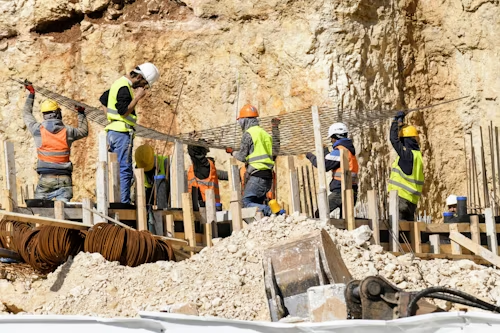
The U.S. construction industry is grappling with a growing workforce crisis as the demand for skilled tradespeople continues to outstrip the available supply, according to new research from workforce solutions firm TrueBlue and its PeopleReady Skilled Trades division.

The study, which analyzed more than 700,000 construction trade job postings over the past year, underscores a troubling reality for the sector. “Driven by both industry growth and workforce retirements, construction occupations are projected to grow faster than average through 2033,” TrueBlue noted in a press release.
The Bureau of Labor Statistics projects more than 650,000 job openings each year in construction over the next decade, fueled by ongoing retirements, population growth, and infrastructure spending. Electricians, plumbers, pipefitters, carpenters, heavy equipment operators, HVAC installers, and general laborers remain among the most sought-after roles.
Hiring demand reached a new peak in June, marking the highest number of postings since August 2022. Geographically, Texas, Florida, California, North Carolina, and Pennsylvania lead the nation in construction job opportunities, reflecting strong growth in both residential and infrastructure projects.
The report also highlights significant wage trends. The median advertised salary for construction trade roles now stands at $56,200, well above the national median of $49,500 for all occupations, signaling the premium being placed on skilled labor.
Yet the sector’s workforce is aging rapidly. Nearly 40% of trade workers are over the age of 45, and almost half of those are over 55, raising concerns about replacing retiring workers. By contrast, fewer than 12% of construction trade workers are aged 19 to 24, indicating a pressing need to attract younger talent into the trades.

Industry leaders are calling for a cultural shift in how young people view construction careers. “As the gap between supply and demand grows, recent graduates should strongly consider building their career in the trades,” said Amy Biedenharn, executive director of Independent Electrical Contractors. “These careers offer clear pathways, on-the-job training and the potential to earn six-figure salaries in specialized fields.”
Analysts warn that without immediate action, the shortage could slow major infrastructure projects, delay housing developments, and drive costs higher. Solutions being discussed include expanding trade school programs, increasing apprenticeship opportunities, promoting construction careers in high schools, and offering more flexible pathways into the industry for women and underrepresented groups.
The research comes as the federal government and private developers alike are ramping up investments in housing, renewable energy, transportation, and manufacturing facilities—projects that will require tens of thousands of additional workers in the coming years.
Experts suggest that the next five years will be critical. If the construction sector cannot close its talent gap, the ripple effects could reach beyond the building industry, slowing economic growth and straining supply chains nationwide.
Originally reported by Felicity Glover in Staffing Industry Analysts.